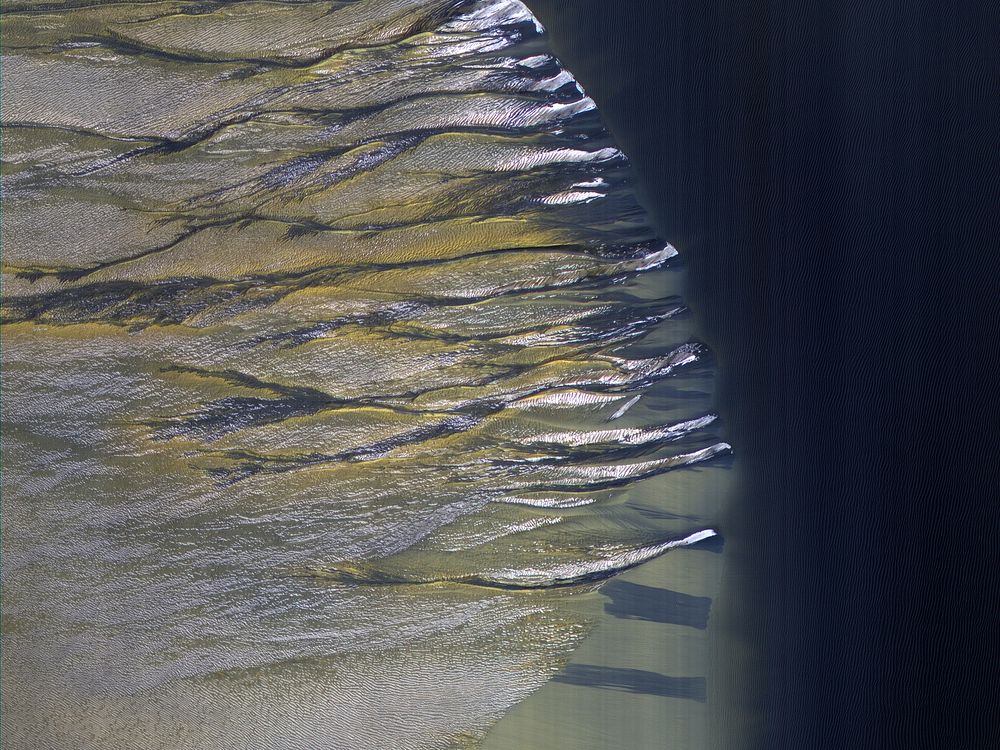https://creativecommons.org/publicdomain/zero/1.0/https://www.rawpixel.com/image/9654528

Defrosting Dunes in Kaiser Crater
The dark sand dune at the center of this observation is covered in a blanket of white seasonal ice in the winter. In this Martian springtime image, the western slope of the dune is partly defrosted.
Bright patches of frost (white in enhanced color) are clearly visible and are made up of water and carbon dioxide ices. Dark streaks of sand have flowed down the dune’s slope that sometimes covers the frost. These flows are caused by the rapid transformation of the frost from ice to gas as the sun heats the dune in the spring.
We can also see how these flows are diverted by the ripples on the dune. (Image is less than 1 km across and is 251 km above the surface.)
uahirise.org/ESP_072042_1330
NASA/JPL/UArizona
Defrosting Dunes in Kaiser Crater
The dark sand dune at the center of this observation is covered in a blanket of white seasonal ice in the winter. In this Martian springtime image, the western slope of the dune is partly defrosted.
Bright patches of frost (white in enhanced color) are clearly visible and are made up of water and carbon dioxide ices. Dark streaks of sand have flowed down the dune’s slope that sometimes covers the frost. These flows are caused by the rapid transformation of the frost from ice to gas as the sun heats the dune in the spring.
We can also see how these flows are diverted by the ripples on the dune. (Image is less than 1 km across and is 251 km above the surface.)
uahirise.org/ESP_072042_1330
NASA/JPL/UArizona
Original public domain image from Flickr
Public DomainFree CC0 image for Personal and Business use